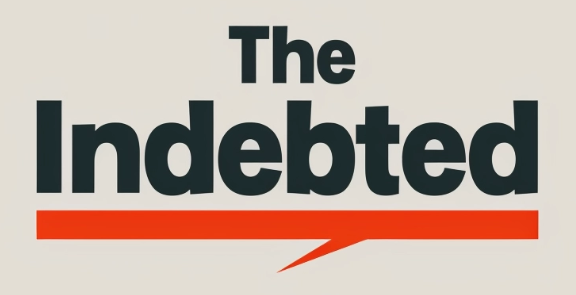If you’re struggling with debt, you’re not alone. According to recent statistics, the average American has over $90,000 in debt, including mortgages, student loans, credit card balances, and other types of debt. Living with debt can be stressful and overwhelming, but it’s important to remember that there are steps you can take to get back on track.
One of the most important things you can do is to create a debt payoff plan that works for you. A debt payoff plan is a strategy for paying off your debt in a way that is manageable and effective. There are many different types of debt payoff plans, and the key is to find one that fits your budget and lifestyle. In this article, I’ll share some tips and strategies for creating a debt payoff plan that works for you.
Understanding Your Debt
Debt can be overwhelming, but it’s important to understand what you owe and to whom. By understanding your debts, you can create a plan to pay them off and become debt-free. Here are some steps to help you understand your debt:
List Your Debts
The first step in understanding your debt is to make a list of all your debts. This includes credit card balances, loans, and any other debts you may have. Be sure to include the creditor’s name, the amount owed, the interest rate, and the minimum monthly payment. You can use a spreadsheet or a piece of paper to create your list.
Once you have your list, you can organize your debts by interest rate or balance. This will help you prioritize which debts to pay off first. You can also see how much you owe in total and create a budget to help you pay off your debts.
Check Your Credit Report
Your credit report is a record of your credit history, including your debts and payment history. It’s important to check your credit report regularly to make sure there are no errors or fraudulent accounts. You can get a free copy of your credit report from each of the three major credit bureaus once a year.
Checking your credit report can also help you understand your credit score. Your credit score is a number that represents your creditworthiness. It’s based on your credit history, including your debts, payment history, and other factors. A higher credit score can help you get better interest rates on loans and credit cards.
In summary, understanding your debt is the first step in creating a debt payoff plan that works for you. By listing your debts and checking your credit report, you can create a plan to pay off your debts and become debt-free.
Creating a Budget
As we begin to create a debt payoff plan, the first step is to create a budget. A budget is a financial plan that helps you track your income and expenses. It is essential to have a budget in place to ensure that you have enough money to pay off your debts and still meet your other financial obligations.
Analyze Your Expenses
To create a budget, you first need to analyze your expenses. Start by making a list of all your monthly expenses, including rent/mortgage, utilities, groceries, transportation, and any other recurring expenses. Once you have a list of your expenses, you can categorize them into essential and non-essential expenses.
Essential expenses are those that you cannot do without, such as rent/mortgage, utilities, and groceries. Non-essential expenses are those that you can cut back on, such as dining out, entertainment, and shopping.
Identify Extra Money
After analyzing your expenses, the next step is to identify any extra money that you can use to pay off your debts. This could be money from a side hustle, a tax refund, or any other source of income that you can use to pay down your debts.
Once you have identified your extra money, you can use it to pay off your debts faster. You can either use the extra money to pay off one debt at a time or divide it among your debts.
Remember, when creating a budget, it is essential to have a predetermined budget that you can stick to. This will help you stay on track and ensure that you are making progress towards your debt payoff goals.
Choosing a Debt Payoff Strategy
When it comes to paying off debt, having a solid plan in place is crucial to achieving your financial goals. There are several debt payoff strategies to choose from, each with its own set of advantages and disadvantages. In this section, I will discuss the three most popular debt payoff strategies: the Debt Snowball Method, the Debt Avalanche Method, and the Custom Method.
Debt Snowball Method
The Debt Snowball Method involves paying off your smallest debt first, then moving on to the next smallest debt, and so on until all your debts are paid off. This method can be very effective for people who need a psychological boost to keep them motivated. By paying off the smallest debt first, you get a quick win, which can be very motivating.
Debt Avalanche Method
The Debt Avalanche Method involves paying off your debt with the highest interest rate first, then moving on to the debt with the next highest interest rate, and so on until all your debts are paid off. This method can be very effective for people who want to save money on interest charges in the long run. By paying off the debt with the highest interest rate first, you can reduce the amount of interest you pay over time.
Custom Method
The Custom Method involves creating your own debt payoff plan, based on your individual financial situation. This method can be very effective for people who have a mix of debts with different interest rates and balances. To create your own custom debt payoff plan, you can use a debt payoff calculator or spreadsheet to determine how much you need to pay each month to pay off your debts in a certain amount of time.
When choosing a debt payoff strategy, it’s important to consider your individual financial situation and goals. If you need a quick win to stay motivated, the Debt Snowball Method may be the best choice for you. If you want to save money on interest charges in the long run, the Debt Avalanche Method may be the best choice for you. If you have a mix of debts with different interest rates and balances, the Custom Method may be the best choice for you. Regardless of which method you choose, the most important thing is to stick with your plan and stay committed to paying off your debts.
Implementing Your Debt Payoff Plan
Once you have created a debt payoff plan, it’s time to put it into action. Implementing your plan may seem daunting, but with a little organization and discipline, you can make steady progress toward becoming debt-free.
Set Up a Repayment Plan
The first step in implementing your debt payoff plan is to set up a repayment plan. This involves deciding how much you will pay each month toward your debts and which debts you will pay off first. If you have multiple debts, it’s important to prioritize them based on factors such as interest rates, minimum payments, and due dates.
One approach to setting up a repayment plan is the debt avalanche method. This involves paying off debts with the highest interest rates first, while making minimum payments on other debts. Another approach is the debt snowball method, which involves paying off debts with the smallest balances first, while making minimum payments on other debts. Choose the method that works best for you and stick to it.
Tracking Progress
Tracking your progress is an important part of implementing your debt payoff plan. It allows you to see how far you have come and motivates you to keep going. One way to track your progress is to create a spreadsheet or use a debt tracking app to monitor your payments and balances. This will help you stay on top of due dates and ensure that you are making progress toward your goals.
Another way to track your progress is to celebrate small victories along the way. For example, when you pay off a debt or reach a milestone, treat yourself to something small but meaningful, like a nice dinner or a new book. This will help you stay motivated and focused on your goals.
In addition to tracking your progress, it’s important to make adjustments to your plan as needed. If you find that your plan is not working, consider a debt management plan or a debt consolidation loan. You may also want to consider making extra payments when you can to accelerate your progress and reduce the amount of interest you pay over time.
By setting up a repayment plan, tracking your progress, and making adjustments as needed, you can implement your debt payoff plan and achieve your financial goals.
Staying Disciplined and Motivated
Creating a debt payoff plan is one thing, but sticking to it is another. Staying disciplined and motivated is key to achieving your financial goals. Here are some tips that can help:
Avoid New Debt
First and foremost, it’s important to avoid taking on new debt while you’re paying off your existing debt. It’s easy to fall into the trap of overspending, especially when you’re trying to stay motivated. But adding new debt will only make it harder to reach your financial goals. Create a budget and stick to it, and avoid using credit cards unless it’s absolutely necessary.
Celebrate Milestones
Paying off debt can be a long and difficult process, so it’s important to celebrate your milestones along the way. Whether it’s paying off a credit card or reaching a certain amount of savings, take the time to acknowledge your progress and give yourself a pat on the back. This will help you stay motivated and focused on your goals.
One way to celebrate milestones is to reward yourself with something you enjoy, such as a dinner out or a new pair of shoes. Just make sure the reward doesn’t undo all your hard work!
Another way to celebrate milestones is to track your progress visually. Create a chart or graph that shows how much debt you’ve paid off, or how much closer you are to your savings goal. Seeing your progress in a tangible way can be very motivating.
Accountability
Finally, accountability is key to staying disciplined and motivated. Having an accountability partner, such as a friend or family member, can help keep you on track and provide support when you need it. Share your debt payoff plan with them and check in regularly to update them on your progress. Knowing that someone else is counting on you can be a powerful motivator.
In addition to an accountability partner, consider using apps or tools that can help you stay on track. For example, some budgeting apps allow you to set financial goals and track your progress. Others can help you automate your savings or debt payments, making it easier to stay disciplined.
By avoiding new debt, celebrating milestones, and staying accountable, you can stay disciplined and motivated as you work towards your financial goals. Remember, it’s a marathon, not a sprint, so be patient and stay focused on the end goal.
Assessing the Impact and Next Steps
Now that you have created a debt payoff plan, it’s time to assess its impact and take the necessary next steps. Here are some things to consider:
Evaluate Financial Goals
First, evaluate your financial goals. Are you on track to achieve them? If not, what adjustments do you need to make? Remember that paying off debt is just one part of your overall financial plan. You may also need to save for emergencies, retirement, or other financial goals. By creating a budget and tracking your expenses, you can ensure that you are allocating your money in the most effective way possible.
Plan for Financial Freedom
Once you have paid off your debt, it’s important to plan for financial freedom. This means creating a plan to save more money, invest in your future, and achieve your long-term financial goals. For example, you may want to start investing in a retirement account, saving for a down payment on a house, or building an emergency fund. By setting specific financial goals and creating a plan to achieve them, you can ensure that you are on track to achieve financial freedom.
Remember that getting out of debt is just the first step towards achieving financial freedom. By creating a plan to save more money, invest in your future, and achieve your long-term financial goals, you can ensure that you are on track to achieve financial freedom. So, assess the impact of your debt payoff plan and take the necessary next steps to achieve your financial goals.





